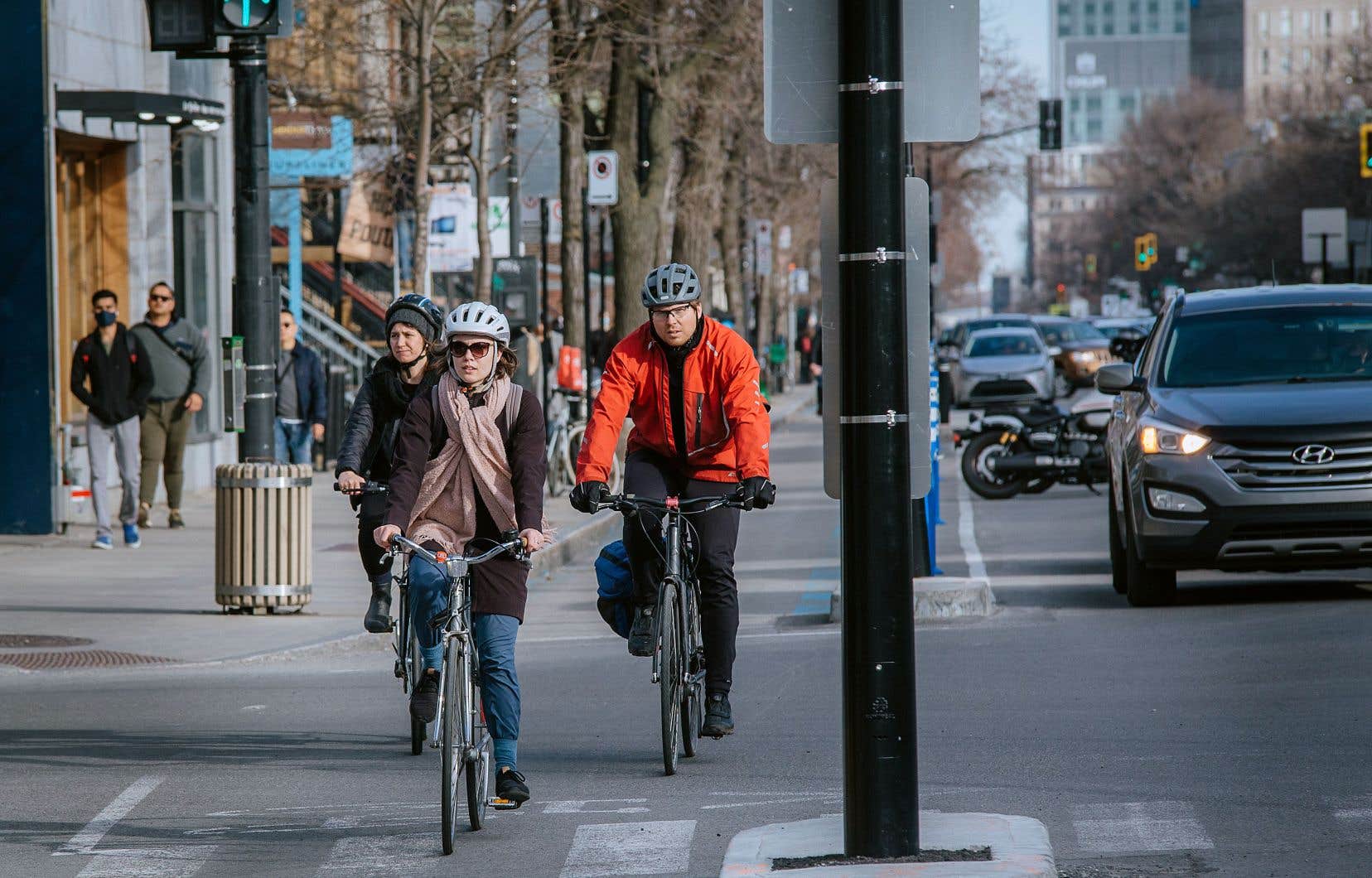Quebec should adapt registration rates and penalties linked to road offenses based on the size of vehicles, estimates Vélo Québec in its brief which will be presented Thursday as part of the study of Bill 48 on road safety. The organization judges that in order to protect the most vulnerable, it is necessary to take into account the higher level of danger posed by light trucks and sport utility vehicles (SUVs).
It is known that the larger the vehicles, the more likely they are to cause serious injuries or even lead to death in the event of a collision with a pedestrian. However, since the 1990s, sales of light trucks and SUVs have grown exponentially. This is why Vélo Québec suggests a gradation of sanctions for road users depending on the type of vehicle they drive. “For the same action, a person driving a heavy vehicle could be subject to a heavier sanction than someone driving a passenger vehicle,” explains Vélo Québec in its brief.
On Tuesday, the organization Piétons Québec made the same recommendation to members of the Transport and Environment Committee, which is examining Bill 48.
In the same vein, the Société de l’assurance automobile du Québec (SAAQ) could adjust the price of vehicle registrations, as it already does on the basis of engine capacity, depending on the size of the vehicles, so that their owners pay their “fair share” in the compensation of victims, suggests Vélo Québec.
Such measures would encourage road users to choose smaller vehicles, and therefore less dangerous, when purchasing them, says Vélo Québec. “We know that what speaks most to people is their wallet. So, if we could come and create this reflection at the time of purchase, we think that it could reduce the risk,” indicates Magali Bebronne, program director at Vélo Québec.
Turning right at a red light
Vélo Québec will also try to convince the Minister of Transport and Sustainable Mobility, Geneviève Guilbault, to ban right turns at red lights throughout Quebec. Implemented in 2003, this measure threatens the safety of pedestrians and cyclists, judges the organization, which reports that between 2003 and 2011, turning right at a red light caused 807 minor injuries, 33 serious injuries and 6 deaths. “I think it’s an important thought to have. If we do not ban it throughout the country, we could at least ban it in all urbanized environments, because we know the growing importance of active travel. It is incompatible with vulnerable users,” maintains Mme Bebronne.
Vélo Québec is also coming back with its request made 10 years ago to no longer force cyclists to stop in front of a stop sign. The Highway Safety Code should allow them to slow down at the intersection and continue on their way if the path is clear, as is done in eight American states, the organization believes. This maneuver is also known as the “Idaho stop”.
And finally, the confusion surrounding which vehicles are allowed on cycle paths continues. Quebec is still slow to decide on the definition of “electrically assisted bicycle”, and this vagueness allows motorcycles and mopeds to invade cycle paths. Last October, The duty reported the case of Anna Morineau, a cyclist hit by an electric scooter on a cycle path near the University of Montreal. The woman had not only denounced the tolerance of the authorities with regard to the presence of this type of vehicle on cycle paths, but also the fact that she could not be compensated by the SAAQ given the fact that she traveled by bicycle.
Vélo Québec deplores that the government is not taking advantage of Bill 48 to resolve this problem. “We find this very unfortunate, because in 2024, we are in the process of reopening the Road Safety Code, but we have no idea what the next opportunity will be to resolve this issue,” says M.me Bebronne.
Despite its criticism, Vélo Québec still believes that the bill “goes in the right direction”, particularly with the harmonization of sanctions for non-compliance with pedestrian safety and the increase in the number of photo radars.
Montreal wants more photo radars
Appearing before the Transport and Environment Committee on Wednesday, the City of Montreal demanded full autonomy in the management of photo radars present on its territory. The head of transport and mobility on the City’s executive committee, Sophie Mauzerolle, said she would like a “large-scale” deployment of photo radars in Montreal. Currently, the metropolis has only eight. Mme Mauzerolle explained that the City wanted to be able to manage its photo radars itself and move them according to its needs.
Minister Geneviève Guilbault took note of the City’s demands, without however making a commitment to this effect.
Bill 48, which modifies the Highway Safety Code, also plans to set the speed limit at 30 km/h in school zones and increases the fines associated with certain offenses committed to the detriment of vulnerable users.
